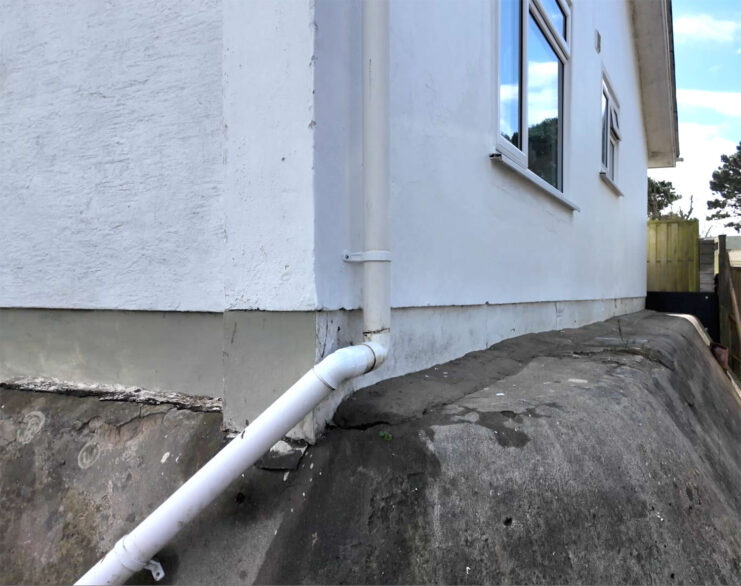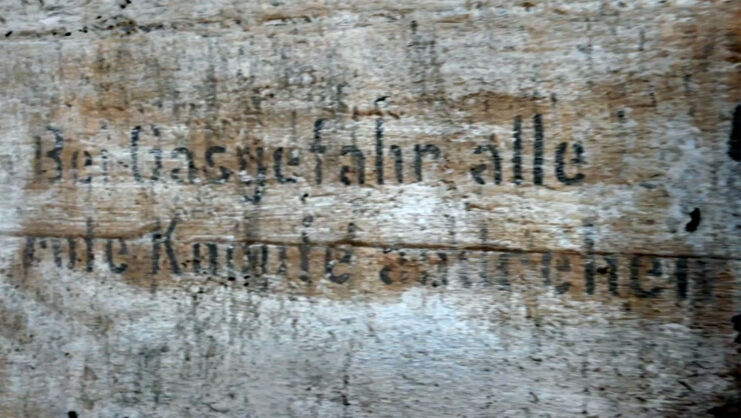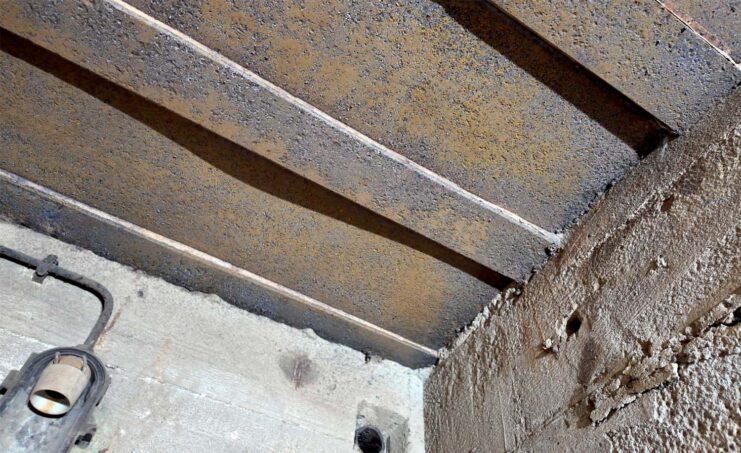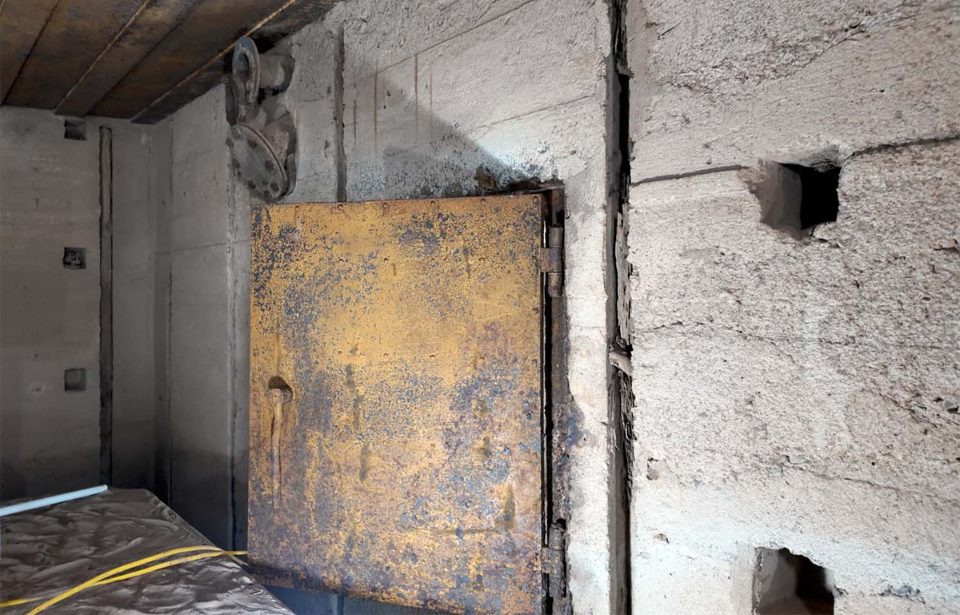Carrie and Shaun Tullier have a house with probably the best foundations on Guernsey, in the Channel Islands. It starts with a two-meter-thick slab of reinforced concrete, and below that is a series of over one-meter-wide supporting walls holding up that slab. With that for a base, their home has little chance of ever being undermined.

Having uncovered a World War II-era German flak bunker and gun emplacement under their home, they can sleep peacefully at night, even though they’ve now gained access to that underfloor complex.
When they first found out they had this huge extra space under their property, their idea was to put it to good use, maybe turn it into a gym, a pool and snooker room, or just use it for general storage. Carrie and Shaun have, however, been seduced by the history of the former German bunker and they’re keen to save as much of the history of it as possible, while still using some parts of it in the future.
Shaun said, “After living there for a while, we became even more aware from our neighbors that normally it’s not just a massive concrete base for a flak gun. Many seem to have rooms underneath, so the hunt was on.”
After a few weeks of digging around their home, they eventually – with the help of their friend, Ryan, and a mechanical digger – uncovered an entrance when a retaining sheet of metal collapsed and revealed part of it. The excitement was too much for Ryan and Shaun, as they dove through the tiny hole wearing head torches to explore what they’d, at last, uncovered.

This project for Carrie and Shaun has been going on for a number of years. The first task was to clear it out, as after the war it was used as a dumping ground for general rubbish and litter. Once that was completed, they set to work and jet blasted the ceiling and some walls, which, in turn, created more mess.
Although it was essential work, it was better for them to understand exactly what was there in their cellar, and it’s ongoing, as they’re still dealing with some water penetration.

The bunker, under one of four flak battery anti-aircraft guns, was of a standard layout that was used on Guernsey and elsewhere by the island’s invaders. The Germans captured the Channel Island in June 1940. These heavy flak 105 cm weapons could fire up to 20,000 feet and damage or down an aircraft at 50 or 100 meters when the shell exploded around them.
The heavy metal doors that would’ve been at the entrances were cut off after the invaders left in May 1945. The remains of their frames are still in situ, and Shaun and Carrie have painted them to protect from further corrosion. Recently, Shaun completed building a safe set of access steps into the main entrance, to help the further work be done safely.

One design feature that Shaun found was that wood mounted into the walls was there to help kill the vibration when the guns did fire. All of these discoveries the couple uncovered have made them keen not only to find out more, but to also save as much of it as possible.
Now that much of the really messy work has been completed, Carrie is keen to retain much of the written signage and notes that are there. They often show people around and are keen to be able to keep a small part of Guernsey’s unique wartime history safe, too.
“Those writings and signs give you a sense of a connection to people who were there at one time and we want to retain those sorts of features,” she said.
More from us: Infamous World War II Tank Reveals New Evidence of Desperate Final Battle
Local research allowed the pair to make contact with the island war historical society, Festung Guernsey (German Fortress Guernsey), that has, for years, helped to maintain a host of bunkers and gun batteries found on the island.
